X
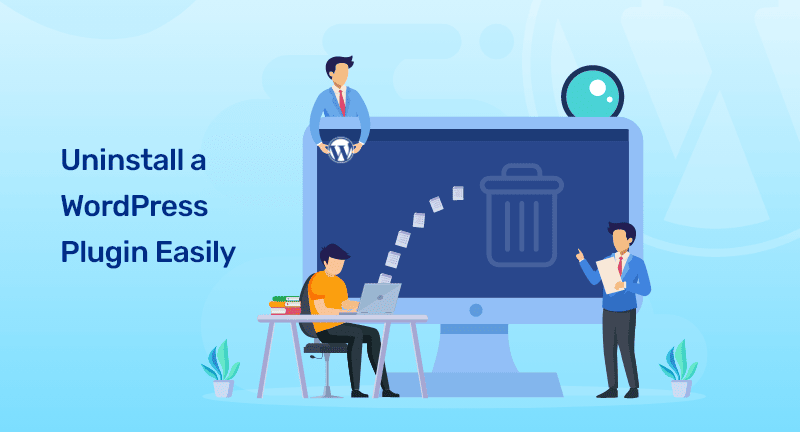
Would you like to uninstall a WordPress plugin from your site, but you don’t know how to do it?
Over time, you will come across plugins that you do not need on your site as your site grows. The best way to improve the performance of your site is to delete those plugins.
The purpose of this article is to show you how to uninstall a WordPress plugin easily.
Well, before uninstalling a plugin, you need to know in-depth why do you do that first? Here are the possible reasons below-
Table of Contents
The WordPress plugin marketplace has thousands of plugins for you for different purposes, and you can install any WordPress plugins easily. Nevertheless, you must also know how to uninstall any WordPress plugins you don’t need.
Plug-ins for WordPress act as applications on your site. Therefore, they can essentially control it from their end. Even though plugin authors take every precaution to make their plugins secure, vulnerability can occur from time to time.
In other words, any plugin on your website that you’re not using can potentially pose a risk. In particular, if you fail to update them, you will be at risk for security threats.
Additionally, if you have unnecessary files on your site, your WordPress backup will be larger, which means it will take longer to download.
There is no limit to how many WordPress plugins you can install. Despite this, we think you should uninstall the plugin if you are not using it.
Moreover, one question may pop up in your mind. That is, instead of uninstalling a plugin, can deactivating be another alternative to it? The answer is no. Deactivating and installing are not the same by any means.
To get a proper idea of it, I’ll take you to have a look below to see the differences between these two.
The deactivation of a plugin is similar to shutting it down when not in use. Some users make it a habit to simply go to the plugins page and deactivate plugins they do not want.
It is very convenient to deactivate a plugin without deleting it permanently because it keeps all your settings and configurations in place even if you reactivate it.
Nevertheless, users often discontinue using the plugin after finding a better solution.
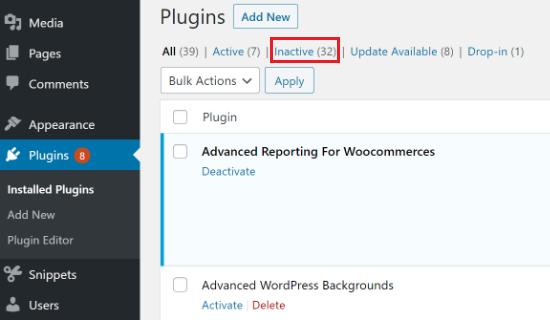
WordPress plugins that have been deactivated can still expose your site to vulnerability because they can still be exploited to run malicious code.
Deactivating plugins is something we always recommend you do only for temporary purposes. It is better to uninstall the plugin if you have no plans to activate it shortly.
As a result of uninstalling the plugin properly, your database will also be kept clear of junk data left by plugins. It helps your site run better since your database isn’t bloated with unnecessary information.
In light of these facts, let’s take a look at how you can uninstall a WordPress plugin easily from your site.
There is a super simple way to uninstall plugins in the WordPress admin area. Visit the Plugins> Installed Plugins page in your dashboard after logging in.
This will show you which plugins are currently installed on your site. However, plug-ins in use are highlighted with blue backgrounds and include a link to Deactivate them. So, you can deactivate them from here whenever you want.
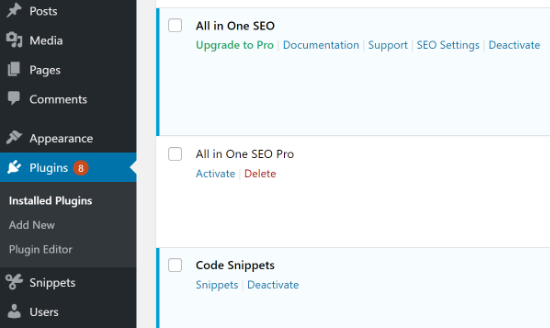
However, inactive plugins can be activated or deleted from your site using a link. In order to uninstall a plugin, simply click on ‘Delete’ beneath the plugin’s name.
Upon deleting the plugin and its data, WordPress asks for your confirmation. All you have to do is click the ‘OK’ button.
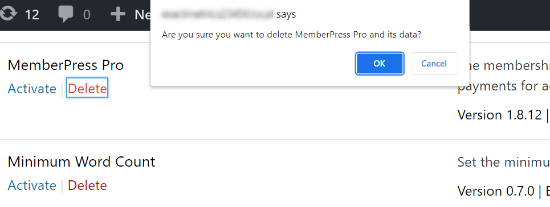
Once done, WordPress will remove the plugins safely. There you go! You have successfully uninstalled a plugin from your WordPress site.
As we all know, when you uninstall something from any system, that lefts traces of it. And, you need to clear those cache files/traces completely.
Having said that, you can take additional steps if you wish to remove all those traces of the plugin. The below steps are optional, but not advisable for beginners.
In most circumstances, merely removing a WordPress plugin will entirely delete it. Some plugins, however, store data even outside the plugins folder. When you deactivate the plugin, such files are not destroyed.
Through your WordPress hosting file manager or an FTP client, you may inspect and remove files saved by the plugin. Simply log in to your website through FTP and navigate to the /wp-content/ folder.
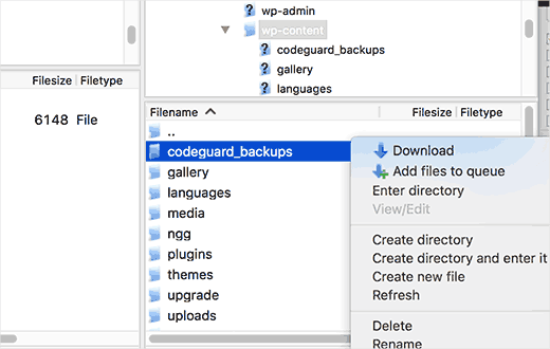
Several backup plugins, gallery plugins, and sliders produce and save data in the wp-content directory. If you don’t have a comprehensive backup of your WordPress site, save these files to your PC as a backup.
Numerous WordPress plugins make use of shortcodes to insert content into your posts and pages. When you deactivate or uninstall a plugin, these shortcodes appear in your articles, and they are rather unsightly.
Here’s how a shortcode might appear in your content:
[pluginshortcode]
You may quickly deactivate shortcodes by inserting this code into the functions.php file of your theme or even a site-specific WordPress plugin.
add shortcode('pluginshortcode', '__return false');
This code restores the shortcode and displays nothing. Please ensures replacing pluginshortcode with the shortcode tag used by the plugin you wish to uninstall.
It is vital to remember that if you wish to use that plugin again, you must delete this code.
Many WordPress plugins add tables to the WordPress database. If these tables contain too much data, the size of your WordPress backup will rise.
phpMyadmin allows you to remove certain tables. However, we must advise you that any modifications to the WordPress database should be done with extreme caution.
Making even little modifications to your website’s database might cause it to crash. As a result, it is strongly advised that you have a comprehensive WordPress backup before taking any action.
As a result, it is strongly advised that you have a comprehensive WordPress backup before taking any action. WordPress hosting companies have cPanel and phpMyAdmin. So, let’s see how you can clean the database up using these.
Well, sign in to your cPanel account and go bottom to the database area. After that, select the ‘phpMyAdmin’ icon.
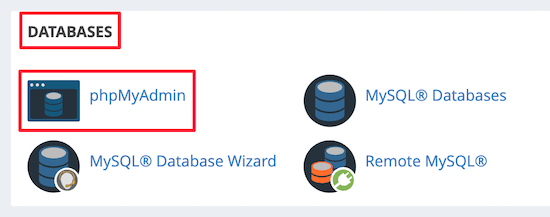
After that, pick the tables you wish to remove by clicking on your database. Once you’ve decided which tables to remove, simply click the ‘Drop’ button to remove them permanently.
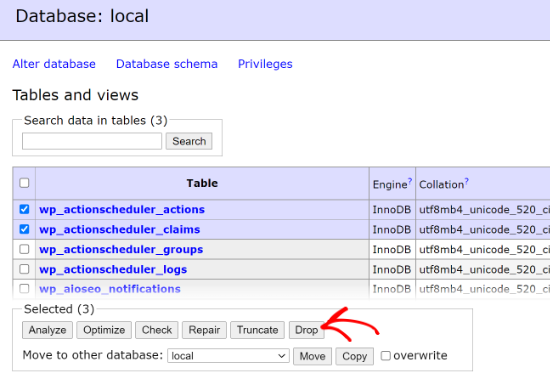
You will now be prompted that you are going to remove these tables. To confirm the action, click on the ‘OK’ button.
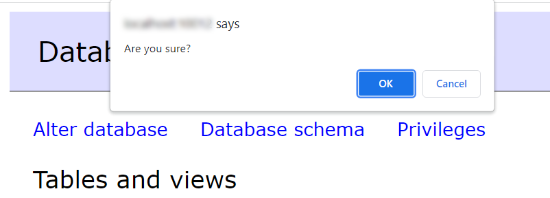
phpMyAdmin will now drop the tables and remove all data from them. Please keep in mind that this step is irrevocable since you will not be able to recover the tables unless you already have a backup.
Well, if you’re looking for a WordPress plugin to make an online food delivery website then please have a look at Restrofood. And see this guide on how you can set up an online restaurant ordering website with WordPress. Additionally, Rrestrofood is making an offer on its price right now that you can’t refuse.
To sum up, follow the above-mentioned procedure to uninstall a WordPress plugin. Alongside the uninstallation, get rid of trash/cache files by following the above extra methods. However, once you’re done, your WordPress site will run smoother than ever before.
Moreover, if you don’t want to uninstall any plugins, simply deactivate them and reactivate them when you’ll be in need of those plugins.
I hope you enjoyed the article. If so, please share your thoughts in the comments area below. Also, if you think this is worth sharing, please share it with your friends and family.
Stay connected with ThemeLooks by subscribing to our WordPress video tutorials on YouTube. We are also on Twitter, Facebook, and LinkedIn.